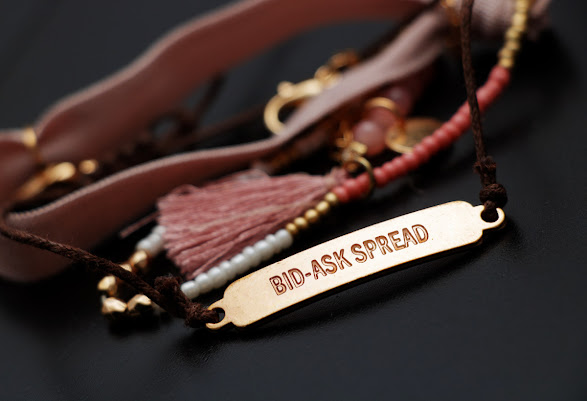Stock Liquidity - Bid-Ask Spread (BAS)
Let’s consider the Bid-Ask Spread (BAS) as the de facto measure of market liquidity [1]. It is typically the difference between ask (offer/sell) price and bid (purchase/buy) price of a stock. Ask price is the value point at which the seller is ready to sell and bid price is the point at which a buyer is ready to buy. When the two value points match in a marketplace, i.e. when a buyer and a seller agree to the prices being offered by each other, a trade takes place. These prices are determined by two market forces -- demand and supply, and the gap between these two forces defines the spread between buy-sell prices. The larger the gap, the greater the spread! BAS can be expressed in absolute as well as percentage terms. When the market is highly liquid, BAS values can be very small, but when the market is illiquid or less liquid, they can be large. To calculate the bid-ask spread percentage, simply take the bid-ask spread and divide it by the sale price. For instance, a $100 stock with a spread of a penny will have a spread percentage of $0.01 / $100 = 0.01%, while a $10 stock with a spread of a dime will have a spread percentage of $0.10 / $10 = 1%. The BAS formula is
BAS = Ask Price – Bid Price
If the bid price for a stock is $19 and the ask price for the same stock is $20, then the BAS for the stock is $1. The BAS can also be calculated as a percentage of the ask price, i.e.
BAS(%)=(1 – Bid Price/Ask Price)*100%
The BAS matters because market dealers make a profit on BAS. Their job is to buy stocks at the bid price and sell at the ask price. Dealer profit is one reason illiquid or lightly traded stocks tend to have larger spreads than frequently traded stocks.
Let’s take a look at another example of BAS from the StocksToTrade platform [62]:
Table 10: Stock TLS ranking based on BAS and Volume.
Stock | Bid | Ask | BAS | BAS % | Volume | Rank |
SPY | 254.25 | 254.31 | 0.06 | 0.02 | 194.9M | |
PTON | 26.75 | 26.85 | 0.1 | 0.37 | 5.7M | |
VRTX | 237.95 | 240.04 | 2.09 | 0.87 | 3.3M | |
CWGRP | 562.88 | 850 | 287.12 | 33.78 | 22.7K | |




Referring to PTON and VRTX, do you see the difference in BAS(PTON/VRTX) compared to the SPY? Both PTON and VRTX don’t have near the volume as the SPY. Here, you need to pay attention to BAS before you enter a trade (Amber). If you’re not careful, you may end up spending more than you realize.
ReplyDeleteFinally, CWGRP is a good example of a largest BAS in the above table. The bid of $562.88 and ask of $850 is a difference of $287.12 and shows that the buyer and seller are in major disagreement about the value of CWGRP (red flag). Also notice the light volume of 22.7K. The big spread leads to a lack of movement.
The bid price refers to the highest price a buyer will pay for a security. The ask price refers to the lowest price a seller will accept for a security. The difference between these two prices is known as the spread; the smaller the spread, the greater the liquidity of the given security.
ReplyDelete
ReplyDeleteBid and Ask Definition - Investopediahttps://www.investopedia.com › terms › bid-and-ask